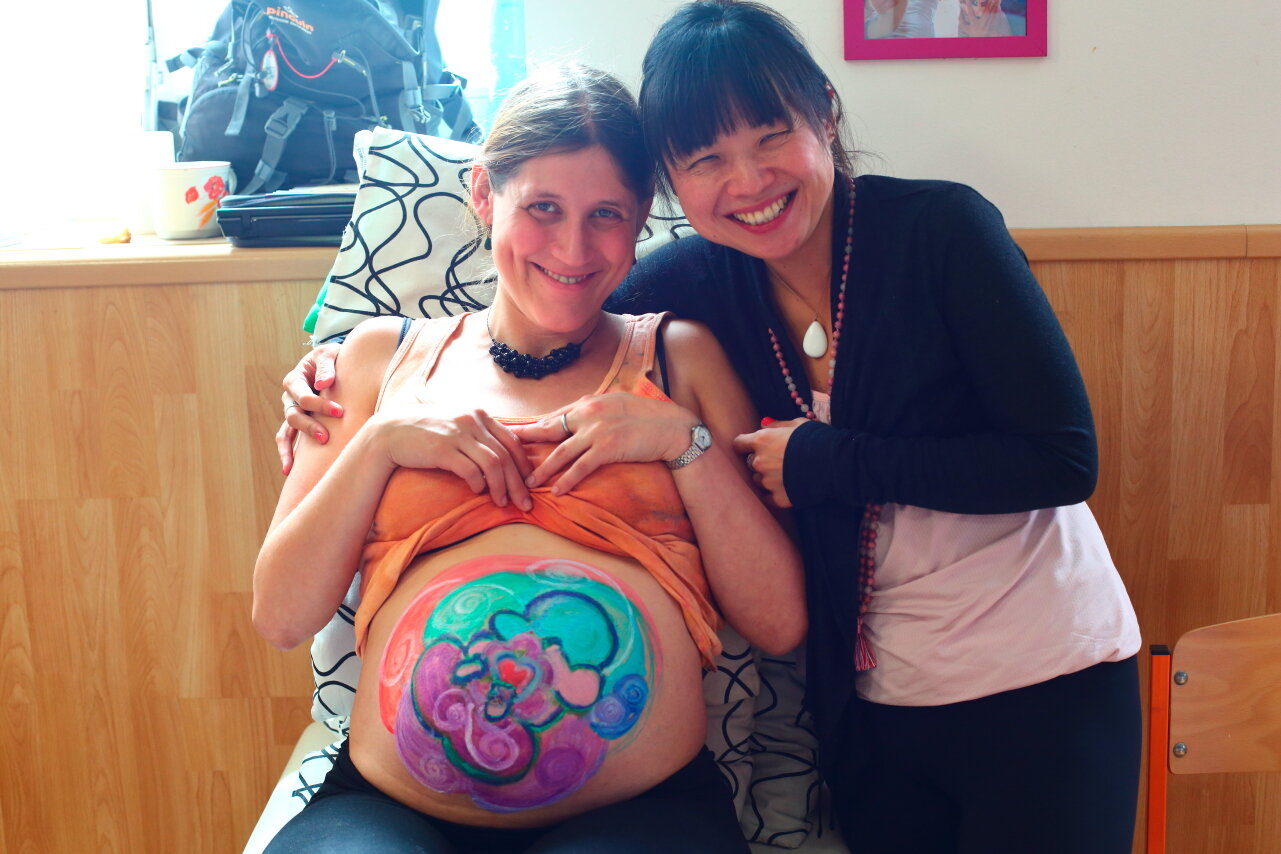What if my baby is in breech or transverse?
what if my baby is in breech or transverse?
The first question to always consider when you find out if your baby is in breech or transverse is to establish ‘How many weeks pregnant you are?’ Different birth cultures have varying perspective as to when it is a concern when a baby is still in breech or transverse position.
At OMP, we would start being proactive about getting babies to turn head down by the time the mother reaches 30 to 32 weeks of her pregnancy as we expect gravity to take over if baby is still head up or in transverse at this stage of pregnancy. If your baby is in breech or transverse, you may find asking a few of these questions helpful:
How many weeks are you? To determine whether it is too early in her pregnancy for this to be a cause for concern.
Did your healthcare provider inform you what type of breech or transverse position your baby is in? What is the breech fetal coordinates? Was this determined through an ultrasound or palpation of the belly? Babies in the breech position can be in one of the following positions:
Frank breech
Complete breech
Footling breech
With the knowledge of fetal coordinates, a mother and her birth partner can ask for more specific information about their baby’s position, where ‘S’ represents ‘sacrum’ instead of ‘occiput’ so is baby in LSA, SA, RSA, RST, RSP, SP, LSP or LST?
Is there any known physical obstructions that could be potentially preventing her baby from moving head down? Some examples would be big fibroids or cysts, anterior placenta, suspected short umbilical, bicornate uterus.
Are there any emotional blockages or stresses that could prevent her baby from moving head down? Sometimes we suspect that baby’s choose an alternative position to get the mother’s attention during pregnancy.
With the OMP concept of maintaining dynamic equilibrium within a mother’s hot air ballon, we believe that gravity should take over by 30 to 32 weeks if there are no known physical or emotional obstructions. before we attempt any alternative methods to get baby’s to turn head down, we recommend starting with the following techniques or to have them done concurrently:
OMP Reversing Protocols: to get the pressure off the cervix. We would recommend using the combination of 1.4 & 1.5 for a total ‘down-time’ of 15-30 minutes during pregnancy, before attempting the OMP Pelvic Alignment Protocols. So this could be doing 1.4 & 1.5 concurrently for 3-5 breaths, working up to a total of 1 minute at each go, and doing it every 1/2-1 hour until you reach a total ‘down-time’ of 15-30 minutes, before you move onto OMP Pelvic Alignment Protocols.
OMP Pelvic Alignment Protocols: to focus on untwisting the hot air balloon in order for gravity to take over.
Some other alternative methods which can be used together with the OMP techniques are:
Webster Technique practiced by Chiropractors
Hypnosis for Breech
Breech Relaxation Tracks
Inversions: As the idea is to get the baby’s buttocks off the cervix in hope to allow more space for the baby to turn, mothers are usually encouraged to be in an anti-gravity position for prolonged periods of time and recommendations can be as simple as elevating an ironing board and having a mother lie on her back head-down-feet-up (anti-gravity) on the ironing board to elevating the base of their bed when sleeping
Physical Bodywork to release the soft tissues to allow more space for the baby to turn head down
Therapies that encourage emotional and fear releases
Acupuncture | Moxibustion used from 33-34 weeks onwards
External Cephalic Version | ECV done by an experienced Obgyn or Midwife from 37 weeks onwards to manually turn the baby head down
The next question mothers like to ask is ‘How do I know when my baby has turned head down and I should stop doing the exercises?’
This is one of the reasons why teaching fetal coordinates to mothers during pregnancy can be a very empowering process to enable pregnant mothers to be more attuned with her own body and her baby’s movements. The most accurate way of ascertaining a baby’s position is through an ultrasound scan.
What if my baby remains in a breech position?
There are a few options you can consider:
Finding a healthcare provider that would support you in having a vaginal breech delivery
Wait for labor to start spontaneously before going in for a cesarean. This allows your baby to decide when your baby is ready to be born before you have your cesarean.
Schedule an elective cesarean
Hands off waterbirth vaginal breech delivery
This was a birth I attended as an apprentice midwife in the US where the mother only discovered that her baby was in the breech position at 37 weeks and they drove 4 hours away to find a healthcare provider who would support a vaginal breech delivery so the moment her labor started, she drove to where the Birth Center was located to have her hands off breech waterbirth!
Breech delivery in the supine position
I am very fortunate in Singapore to work with a healthcare professional who supports vaginal breech deliveries, giving an alternative option for women for would like to exercise this option.



